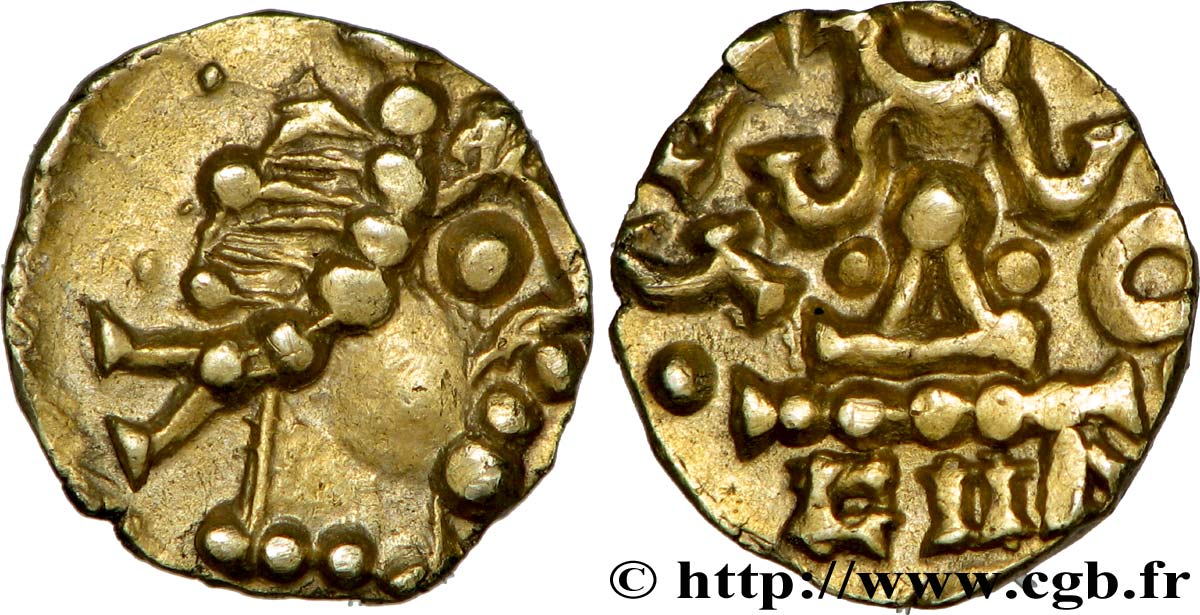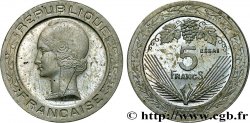bmv_336604 - MEROVINGIAN COINAGE - BANASSAC (BANNACIACO) - Lozere Triens
недоступный.
Товар уже продан в нашем интернет-магазине (2017)
Цена: : 2 200.00 €
Товар уже продан в нашем интернет-магазине (2017)
Цена: : 2 200.00 €
Тип Triens
Дата: c. 620-640
Монетный двор / Город: 48 - Banassac
Металл: gold
Диаметр: 12 mm
Ориентация осей монеты: 8 h.
Вес: 1,24 g.
Редкость: R3
Комментарии о состоянии
Très agréable monnaie frappée sur un flan court, avec un droit décentré et un revers à peu près centré mais sur un flan trop court. Agréable patine sur un métal de qualité
Ссылки в каталоге: :
Лицевая сторона
Аверс: легенда: ANÉPIGRAPHE.
Аверс: описание: Tête barbare diadémée, à droite ; diadème et cou perlés.
Обратная сторона
Реверс: легенда: GA[VALETAN]O // CIIA.
Реверс: Описание: Calice à deux anses, posé sur une ligne d’exergue perlée ; des globules de part et d’autre.
Комментарий
Cet exemplaire semble appartenir au type attribué à SIGEBERT, mais son centrage ne permet pas de préciser les motifs qui ornent l’avant du visage. Au revers la légende GAVALETANO semble pouvoir être restituée, mais l’exergue est plus inhabituel. Nous avons normalement les lettres BAN ou FIIT (à l’envers) à l’exergue alors que ce triens présente tout autre chose ; CIIA (?).
Aucune des monnaies reproduite dans le Belfort ne semble y correspondre.
This example seems to belong to the type attributed to SIGEBERT, but its centering does not allow us to specify the motifs that decorate the front of the face. On the reverse, the legend GAVALETANO seems to be able to be restored, but the exergue is more unusual. We normally have the letters BAN or FIIT (upside down) on the exergue, whereas this triens presents something completely different; CIIA (?). None of the coins reproduced in the Belfort seem to correspond to it.
Aucune des monnaies reproduite dans le Belfort ne semble y correspondre.
This example seems to belong to the type attributed to SIGEBERT, but its centering does not allow us to specify the motifs that decorate the front of the face. On the reverse, the legend GAVALETANO seems to be able to be restored, but the exergue is more unusual. We normally have the letters BAN or FIIT (upside down) on the exergue, whereas this triens presents something completely different; CIIA (?). None of the coins reproduced in the Belfort seem to correspond to it.








 Cообщить об ошибке
Cообщить об ошибке Распечатать страницу
Распечатать страницу Отправить мой выбор
Отправить мой выбор Задать вопрос
Задать вопрос Consign / sell
Consign / sell
 Информация
Информация











